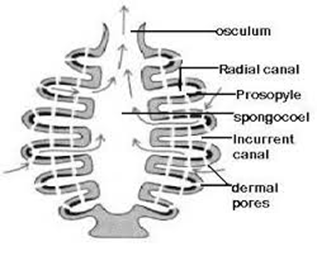Kreb Cycle Steps With Diagram , Steps & Products
Kreb Cycle
Krebs cycle is also known as the citric acid cycle or tricarboxylic acid cycle(TCA). It was discovered by H.A.Kreb in 1953. Kreb Cycle cycle occurs in the matrix of the mitochondria. The whole cycle of Kreb is described in the following figure. The net result of the Krebs cycle is that acetyl group entering the cycle as acetyl- CoA, two molecules of carbon dioxide are produced.
Kreb Cycle Steps -
- Condensation - Acetyl CoA combines with oxaloacetic acid in the presence of citrate synthetase enzyme to form citric acid. It is the first product of the Krebs cycle.
- Dehydration - Citric acid in presence of aconitase enzyme is converted into cis-aconitic acid. Water is released here.
- Hydration - Cis-aconitic acid is converted into isocitric acid with the addition of water in the presence of enzyme aconitase.
- Dehydration - Isocitric acid is oxidized into oxalosuccinic acid by reacting with NAD+ in the presence of isocitrate dehydrogenase.
- Decarboxylation - Oxalosuccinic acid converts into alpha - ketogluteric acid by the removal of one molecule of carbon dioxide in the presence of a carboxylase enzyme.
- Dehydrogenation and Decarboxylation - Alpha-ketogluteric acid reacts with the NAD+ and CoA and gets oxidized into succinyl CoA in the presence of alpha-ketogluteric dehydrogenase enzyme. TPP, lipoic acid, and Mg++ are also required for this reaction.
- Formation of GTP - Succinyl CoA on hydrolysis produces succinic acid and CoA in the presence of succinyl thiokinase enzyme. During this process, one molecule of GTP is formed from GDP by using the energy released during the reaction.
- Dehydrogenation - Succinic acid is oxidized into fumaric acid by reacting with FAD in presence of succinyl dehydrogenase enzyme. FADH2 is produced in the reaction.
- Hydration - Fumaric acid reacts with the one molecule of water in the presence of a fumarase enzyme and forms malic acid.
- Dehydrogenation - At last malic acid is oxidized by reacting with the NAD in presence of malate dehydrogenase enzymes to form oxaloacetic acid. Oxaloacetic acid thus produced combines with Acetyl CoA to form citric acid which again enters into the cycle thus the cycle is repeated.
Answer - "Amounts of energy (ATP) produced during the Krebs cycle - Both NADH2 and FADH2 have oxidized again to NAD and FAD through a chain of reaction called electron transport chain. In this process, ATP molecules are released. From one molecule of NADH2, three molecules of ATP are formed and from one molecule of FADH2, two molecules of ATP are formed. In the process of Kreb cycle eight molecules of NADH2, two molecules of FADH2, two molecules of ATP are synthesized from ATP. "





Comments
Post a Comment